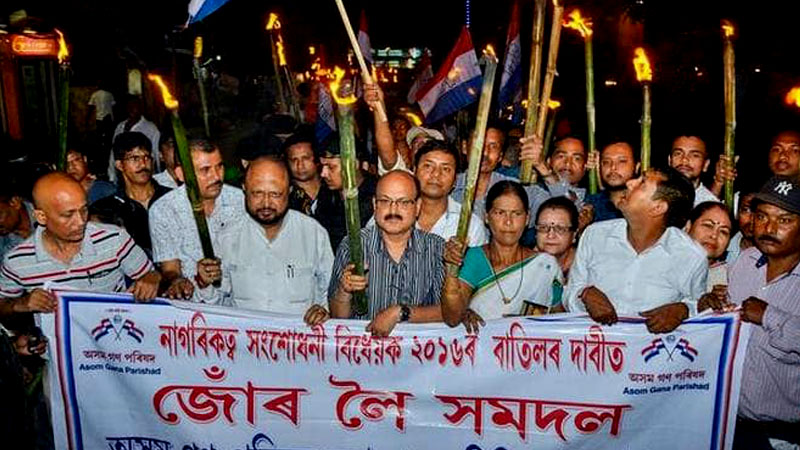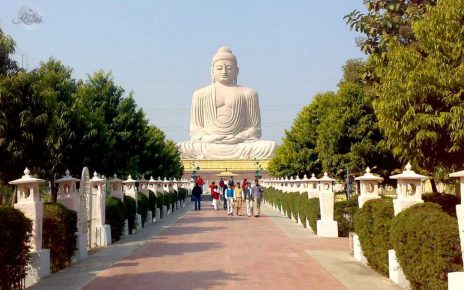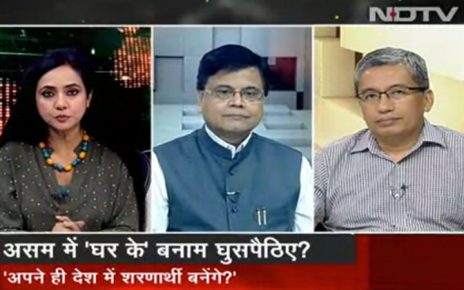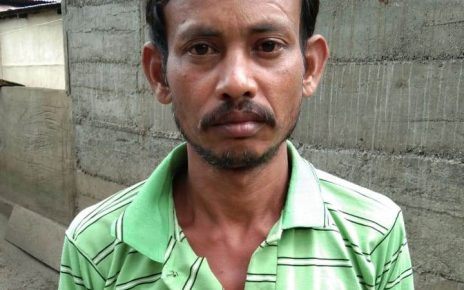Table of contents
1. India needs a refugee law
2. Proposed Amendment of the Citizenship Act
2.1 Proposed amendment of the Citizenship Act
3. The reality of persecution of non-Muslim minorities in South Asia
3.1 Bangladesh: The ever decreasing Hindu populations
3.2 Pakistan
3.3. Afghanistan
4. Opposition to the Citizenship Amendment Bill, 2016
4.1 Opposition in the North East India
4.2 Opposition against exclusion of the Muslims
5. Conclusion and recommendations: India needs a refugee law
1. Executive summary
On 3 January 2019, a Joint Parliamentary Committee (JPC) of the Indian Parliament adopted a report clearing the contentious Citizenship (Amendment) Bill, 2016 and the Government of India is expected to place the Bill in the Lok Sabha today. The Bill removes the term “illegal migrants” with respect to persons belonging to religious minority communities – Hindus, Sikhs, Buddhists, Jains, Parsis and Christians – from Afghanistan, Bangladesh and Pakistan to make them eligible to apply for Indian citizenship. It also reduces the time period to be eligible for citizenship by naturalisation by six years instead of the existing eleven years to persons belonging to minority communities from these countries.[1]
There is no doubt about the persecution of non-Muslim minorities in Afghanistan, Bangladesh and Pakistan.
The Hindus and other minorities have been fleeing from these countries since 1947. The latest census statistics of Bangladesh show that the Hindu population growth rate was 9.3% against Muslim population growth rate of 23.7% during 1974 to 1981; 5.8% against 24.4% during 1981 to 1991, 3.8% against 18.7% during 1991 to 2001 and 6% against 16.9% during 2001 to 2011.[2] The abnormal lower rate of decadal growth of Hindu population in Bangladesh is a consequence of the exodus to India as a result of persecution.
In Pakistan, the Hindu population has declined drastically from about 23% in 1947 to 1.6% in 2017 due to continued forced conversions and persecution.[3] In May 2014, it was informed in the National Assembly of Pakistan that approximately 5,000 Hindus were migrating from the country to India every year.[4] A report released in April 2018 by the Human Rights Commission titled “State of Human Rights in 2017” warned that the migration of Hindus to India “may soon turn into an exodus if the discrimination against them continues”.[5]
There is no official data on the exact number of religious minorities who fled from Pakistan, Bangladesh and Afghanistan. However, in the North East, the Citizenship Amendment Bill, 2016 has been opposed on the grounds that influx threatens the identity of the indigenous peoples in the region. In Assam, Assamese political parties and civil society groups opposed the Bill on the ground that it will nullify the updated National Registration of Citizenship (NRC) and the Assam Accord which sets 26 March 1971 as cut off date to be considered a citizen of India.[6]
Those fleeing persecution cannot be defined by any other term but “refugees”.
The current controversy over the Bill arises because of both India’s failure to enact a law relating to refugees despite the partition of India witnessing the largest influx of refugees in the last century and expulsion of Indian origin persons by Ne Win of Myanmar in 1960s and Adi Amin of Uganda in 1970s and discriminatory approach towards the refugees. India treated refugees in an adhoc manner based on geo-political considerations. The vote bank politics appears to have replaced the geo-politics and the proposed Bill, therefore, does not define or lay down any guidelines to establish “religious persecution”. It is precisely for this reason that India is refouling the Rohingyas to Myanmar despite the Rohingyas facing religious persecution. The proposed Bill also excludes Muslim minority sects like Shias and Ahmediyas, Baha’i who equally face persecution in Pakistan, Afghanistan and Bangladesh.
India cannot shy away from those fleeing persecution. Therefore, it requires a refugee law with clearer guidelines for naturalization that meets the test of equality and non-discrimination.
2. Proposed Amendment of the Citizenship Act
The Citizenship Act, passed by the Parliament in 1955, regulates the acquisition and determination of citizenship. The Act established jus sanguinis, or right of blood, as the primary form of citizenship determination meaning that a person’s citizenship is determined by their parents’ citizenship. It explicitly denies citizenship to all undocumented migrants. As per the Act, an illegal migrant is a foreigner who has entered India without a valid passport or travel documents or who has entered with valid passport or travel documents but stay beyond the permitted time.[7] Currently, illegal immigrants face legal action under Passport (Entry into India) Act, 1920 and the Foreigners Act, 1946.
2.1 Proposed Citizenship Amendment Bill, 2016
On 19 July 2016, the ruling Bharatiya Janta Party (BJP) led National Democratic Alliance (NDA) Government introduced the Citizenship (Amendment) Bill, 2016 in the Lok Sabha.
The Bill, inter alia, proposed the following amendments, “2. In the Citizenship Act, 1955 (hereinafter referred to as the principal Act), in section 2, in sub-section (1), after clause (b), the following proviso shall be inserted, namely:— “Provided that persons belonging to minority communities, namely, Hindus, Sikhs, Buddhists, Jains, Parsis and Christians from Afghanistan, Bangladesh and Pakistan, who have been exempted by the Central Government by or under clause (c) of sub-section (2) of section 3 of the Passport (Entry into India) Act, 1920 or from the application of the provisions of the Foreigners Act, 1946 or any order made thereunder, shall not be treated as illegal migrants for the purposes of this Act.”.[8]
In other words, the Bill seeks to stop imprisonment or deportation of illegal immigrants from these communities. In response to a question in Lok Sabha, Union Minister of State for Home, Kiren Rijiju on 22 November 2016 stated that the Central Government had introduced the Bill in the Lok Sabha for amendment of the term “illegal migrants” to enable migrants of minority communities, like Hindus, Sikhs, Christians, Buddhists, Jains and Parsis from Afghanistan, Bangladesh and Pakistan who have entered into India on or before 31st December, 2014 to obtain Indian Citizenship.[9]
The Bill also proposes to reduce the minimum years of residency in India for qualification as a citizen from “not less than 11 years” to “not less than six years” for persons belonging to these minority communities. The new proviso to be inserted says “Provided that for the persons belonging to minority communities, namely, Hindus, Sikhs, Buddhists, Jains, Parsis and Christians from Afghanistan, Bangladesh and Pakistan, the aggregate period of residence or service of a Government in India as required under this clause shall be read as “not less than six years” in place of “not less than eleven years”. [10]
In addition, it penalizes the Overseas Citizen of India Cardholder for violating any of the provisions of this Act or provisions of any other law for the time being in force with the sole aim to curb criticisms.
3. The reality of persecution of non-Muslim minorities in South Asia
The Citizenship Amendment Bill, 2016 is the fulfillment of a promise that the ruling BJP government had made in its 2014 Lok Sabha election manifesto. The manifesto says “India shall remain a natural home for persecuted Hindus and they shall be welcome to seek refuge here”.[11] During election campaigns, Prime Minister Narendra Modi said that Hindu migrants from Bangladesh must be accommodated in the country and detention camps would be done away with once his party comes to power.[12]
There is no doubt about the persecution of non-Muslim minorities in South Asia which resulted in the exodus. There is no official data on the exact number of religious minorities from Pakistan, Bangladesh and Afghanistan living in India.
3.1 Bangladesh: The ever decreasing Hindu populations
Religious minorities in Bangladesh i.e. Hindus, Christians, Buddhists, Shi’a Muslims, Sikhs, Baha’is, Animists, and Ahmadis constituted 9.6 percent of the total population of the country as per 2011 census. Out of these, 8.5 percent are Hindus, 0.6 percent Buddhists, 0.3 percent Christians, and 0.2 percent others[13] i.e. Shi’a Muslims, Sikhs, Baha’is, Animists, and Ahmadis.[14]
Historically, the religious minorities have been target of violence, discrimination, persecution, land grabbing including under the Enemy Properties Act of 1965. Since the partition of India in 1947, the Hindu share of the country’s population has steadily diminished. Millions of Hindus have fled to India. A 2016 research report by a teacher of Dhaka University revealed that from 1964 to 2013, around 11.3 million Hindus left Bangladesh due to religious persecution and discrimination. In other words, an average of 632 Hindus left the country each day and 230,612 annually.[15]
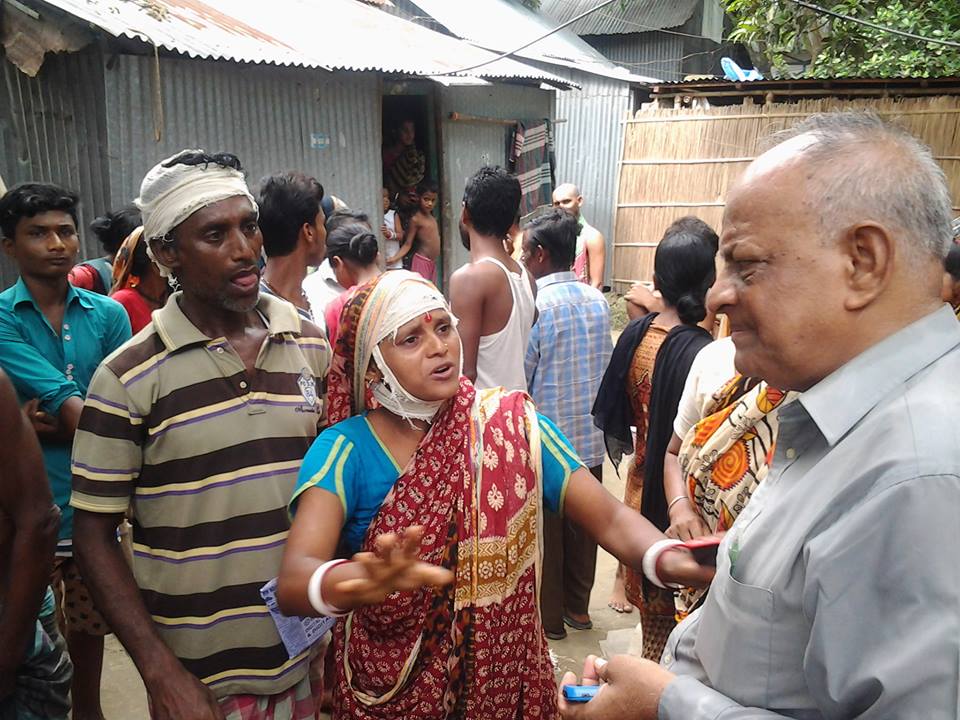
According to the 1951 census, the Hindu population was 22% of the total population in then East Pakistan. It decreased to 13.5% in 1974 census, 12.1% in 1981, 10.5% in 1991, 9.3% in 2001 and further plummeted to 8.5% in 2011 census. The religious composition of Bangladesh as per 1974 to 2011 census is given in the table below:[16]
Religious composition of population of Bangladesh during 1974-2011[17]
| Year of census | Total Population | Religious composition | ||||
| Muslim | Hindu | Buddhist | Christian | Others | ||
| 1974 | 7,14,78,000 | 85.4% | 13.5% | 0.6% | 0.3% | 0.2% |
| 1981 | 8,71,20,000 | 86.7% | 12.1% | 0.6% | 0.3% | 0.3% |
| 1991 | 10,63,15,000 | 88.3% | 10.5% | 0.6% | 0.3% | 0.3% |
| 2001 | 12,43,55,000 | 89.6% | 9.3% | 0.6% | 0.3% | 0.2% |
| 2011 | 14,40,44,000 | 90.4% | 8.5% | 0.6% | 0.3% | 0.2% |
Religious composition of population of Bangladesh in absolute numbers during 1974-2011[18]
| Year of census | total population | religious composition | ||||||||||
| Muslim | percentage of decadal growth | Hindu | percentage of decadal growth | Buddhist | Decadal growth rate | Christian | Others | |||||
| 1951 | 42.06 million | 22% | ||||||||||
| 1961 | 50.84 million | |||||||||||
| 1974 | 7,14,78,000 | 6,10,39,000 | 96,73,000 | 4,39,000 | 2,16,000 | 1,11,000 | ||||||
| 1981 | 8,71,20,000 | 7,54,87,000 | 23.7 | 1,05,70,000 | 9.3 | 5,38,000 | 22.6 | 2,75,000 | 2,50,000 | |||
| 1991 | 10,63,15,000 | 9,38,81,000 | 24.4 | 1,11,79,000 | 5.8 | 6,23,000 | 15.8 | 3,46,000 | 2,86,000 | |||
| 2001 | 12,43,55,000 | 11,13,93,000 | 18.7 | 1,16,08,000 | 3.8 | 7,74,000 | 24.2 | 3,89,000 | 1,91,000 | |||
| 2011 | 14,40,44,000 | 13,02,05,000 | 16.9 | 1,23,00,000 | 6 | 8,90,000 | 15 | 4,47,000 | 2,02,000 | |||
The decadal growth of Hindu population is abnormally low in comparison to Muslim population. Officially, the reduction of Hindu population has been attributed to lower fertility of Hindu population and partly due to out-migration.[19] Interestingly the ratio of Buddhist and Christian population remain the same over the years despite being persecuted and rights violated. This indicates more Hindus fleeing from Bangladesh because of more vulnerability.
It is presumed that the Hindu population will record further decrease in the next census due to sharp rise in religious extremism in recent years. Hindus and other religious minorities have been killed or injured in targeted attacks, their properties looted; houses burnt, temples desecrated and set on fire. The 2017 United States Commission on International Religious Freedom report documented increased deadly attacks against religious minorities in 2016. The report stated that threats and violence have heightened the sense of fear among the religious minorities.[20]
3.2 Pakistan
As per 2017 census, Pakistan’s total population is 207,774,520 (207 million) persons. The religious minorities i.e. Hindus, Christians, Sikhs, Parsis/ Zoroastrians, etc make up 3.73% of the total population. Of these, Hindus include 1.60%, Christians with 1.59%, Ahmadis with 0.22% and others with 0.32%.[21]
The Hindu population has declined drastically from about 23% in 1947 to 1.6% in 2017 due to continued forced conversions and persecution.[22] In the 1998 Census the total population was 137 million with religious minorities constituting 3.84% with the Hindus accounted for 1.40%. According to the census of 1981, out of a total of 84,253,644 persons, Hindus accounted 1,276,116 persons.[23]
The main reason for the decrease in the Hindu population is the migration to India. In May 2014, it was informed in the National Assembly of Pakistan that approximately 5,000 Hindus were migrating from the country to India every year.[24] To date, the religious minorities continued to suffer persecution, discrimination and attacks from religious extremists, with little state protection. In January 2018, the US State Department put Pakistan on a special watch list for “severe violations” of religious freedom.[25]
A report released in April 2018 by the Human Rights Commission titled “State of Human Rights in 2017” warned that the migration of Hindus to India “may soon turn into an exodus if the discrimination against them continues”.[26]
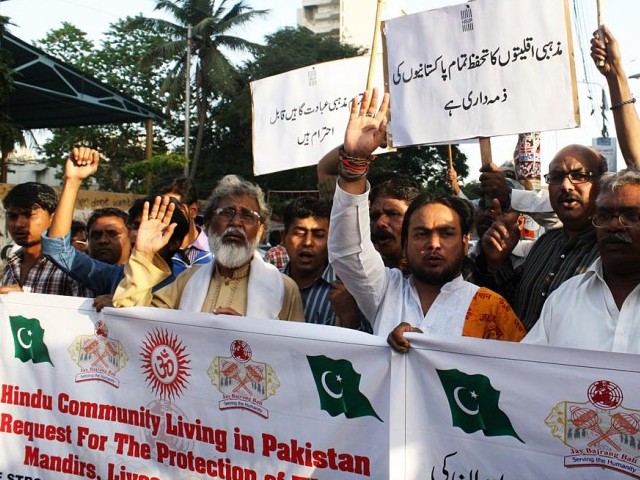
3.3. Afghanistan
Out of the total population of 33,000,000 in Afghanistan, religious minorities such as Hindu, Sikh, Baha’i, and Christian accounts for only 1%. The 2018 USCIRF report stated the security situation in Afghanistan remains unsettled, which negatively impacts religious freedom throughout the country. The report also said that non-Muslim groups like Hindus, Christians and Sikhs remain endangered minorities and lack the ability to publicly take part in their religious traditions.[27]
4. Opposition to the Citizenship Amendment Bill, 2016
The Citizenship Amendment Bill 2016 has been opposed by the opposition political parties. In view of the opposition, on 11 August 2016, when the Bill was listed in the Lok Sabha for consideration and passing, Union Home Minister Rajnath Singh moved a motion for referring the Bill to a Joint Committee of the both Houses to study the issue. The Joint Parliamentary Committee (JPC), headed by BJP Member of Parliament Dr Satya Pal Singh, comprises 30 members – 20 from Lok Sabha and 10 from Rajya Sabha. The JPC was to submit a report to Lok Sabha by the last day of the first week of the Winter Session 2016.[28]
In December 2017, another MP from the BJP, Rajendra Agrawal replaced Dr Satya Pal Singh as chairman of the JPC.[29] The JPC conducted over nine sittings viz on 21 September 2016, 3 October 2016, 13 October 2016, 25 October 2016, 26 October 2016, 22 March 2017, 19 July 2017, 3 January 2018, and 17 April 2018. The JPC visited border States of Gujarat from 18 to 20 April 2017, Rajasthan from 18 to 20 December 2016,[30] Assam from 7 to 10 May 2018, and Meghalaya on 11 May 2018, where it held meetings with various stakeholders.[31]
4.1 Opposition in the North East India
The Bill has been strongly opposed in the Northeast region. In its tour to Assam and Meghalaya, the JPC held discussions amid protests by politicians, NGOs, student bodies etc. On 10 May 2018, the State Government of Meghalaya went a step ahead and passed a Cabinet resolution opposing the Bill, calling it “dangerous”, just a day ahead of the scheduled visit of JPC to Meghalaya.[32]
In the northeast, the opposition against the Bill stems out of concerns of influx of Hindu migrants from Bangladesh and loss of distinct identity and culture of the indigenous people.
In Assam, a number of Assamese groups stated that it will nullify the updated National Registration of Citizenship (NRC) and the Assam Accord which provides for deportation of anyone who has entered the State illegally post-24 March 1971 as was decided in the 1985 Assam Accord.[33]
Assam population growth rate – from 1941 vis a vis rest of India[34]
| Year | Assam | Growth (%) | India | Growth (%) |
| 1941 | 66,94,790 | 20.40 | 31,86,60,580 | 14.22 |
| 1951 | 80,28,856 | 19.93 | 36,10,88,090 | 13.31 |
| 1961 | 1,08,37,329 | 34.98 | 43,92,34,771 | 21.51 |
| 1971 | 1,46,25,152 | 34.95 | 54,81,59,652 | 24.80 |
| 1981* | 1,80,41,248 | 23.36 | 68,33,29,097 | 24.66 |
| 1991 | 2,24,14,322 | 24.24 | 84,64,21,039 | 23.87 |
| 2001 | 2,66,55,528 | 18.92 | 102,87,37,436 | 21.54 |
| 2011 | 3,12,05,576 | 17.07 | 121,08,54,977 | 17.70 |
*The 1981 Census could not be held owing to disturbed conditions prevailing in Assam. Hence the population figures for 1981 of Assam have been worked out by Interpolation.
The above statistics show that Assam had witnessed more population growth rate than the rest of India from 1951 to 1971 as a consequence of influx.
4.2 Opposition against the exclusion of the Muslims
The political parties have been opposing the Citizenship Amendment Bill, 2016 for the exclusion of the Muslims.
The Bill also does not define or lay down any guidelines to establish “religious persecution”. The refoulement of the Rohingyas who face religious persecution in Myanmar is instructive.
Further, the Bill does not cover other religious minorities such as Muslim sects like Shias and Ahmediyas, Baha’i who equally face persecution in Pakistan, Afghanistan and Bangladesh.
5. Conclusion and recommendations: India needs a refugee law
The Registration of Foreigners Act of 1939, the Foreigners Act of 1946, and the Foreigners Order of 1948 are the primary documents dealing with the treatment of foreigners in India. On 29 December 2011, the Government circulated a Standard Operating Procedure for dealing with foreign nationals who claim to be refugees. The claims made by such foreign nationals are examined and if found justified Long Term Visa (LTV) is granted which can further be renewed. One of the factors to be seen for grant of LTV is the general perceived condition in the home country of the people belonging to the community of the foreigner making the claim.[35]
If the Government of India is truly committed to provide protection of those fleeing persecution, who cannot be defined by any other term but refugees, it should enact a refugee law with clearer guidelines for naturalization that meets the test of equality and non-discrimination.
Endnotes:
[1]. The Citizenship (Amendment) Bill, 2016 is available in the website of Lok Sabha at http://164.100.47.4/BillsTexts/LSBillTexts/Asintroduced/172_2016_LS_ENG.pdf
[2]. Population of Monograph of Bangladesh, Vol.9, Bangladesh Bureau of Statistic, http://203.112.218.65:8008/WebTestApplication/userfiles/Image/PopMonographs/Volume-9_Age-Sex.pdf
[3]. Population by Religion, 2017 Census, Govt of Pakistan, http://www.pbs.gov.pk/sites/default/files//tables/POPULATION%20BY%20RELIGION.pdf
[4]. 5,000 Hindus migrating to India every year, NA told, Dawn, 13 May 2014, https://www.dawn.com/news/1105830
[5]. Religious minorities continue to face violent attacks in Pakistan: watchdog, The Hindu Business Line, 16 April 2018, https://www.thehindubusinessline.com/news/world/religious-minorities-continue-to-face-violent-attacks-in-pakistan-watchdog/article23561059.ece
[6]. What is the Citizenship (Amendment) Bill, 2016?, The Hindu, 26 May 2018, http://www.thehindu.com/news/national/other-states/what-is-the-citizenship-amendment-bill-2016/article23999348.ece
[7]. The Citizenship Act, 1955, https://indiacode.nic.in/bitstream/123456789/1522/1/195557.pdf
[8]. The Citizenship (Amendment) Bill, 2016 is available in the website of Lok Sabha at http://164.100.47.4/BillsTexts/LSBillTexts/Asintroduced/172_2016_LS_ENG.pdf
[9]. Unstarred Question No.1013, Lok Sabha, http://164.100.47.194/Loksabha/Questions/QResult15.aspx?qref=41617&lsno=16
[10]. The Citizenship (Amendment) Bill, 2016 is available in the website of Lok Sabha at http://164.100.47.4/BillsTexts/LSBillTexts/Asintroduced/172_2016_LS_ENG.pdf
[11]. BJP Manifesto 2014, http://www.bjp.org/images/pdf_2014/full_manifesto_english_07.04.2014.pdf
[12]. We must accommodate Hindu Bangladeshi migrants: Modi in Assam, The Times of India, 22 February 2014, https://timesofindia.indiatimes.com/india/We-must-accommodate-Hindu-Bangladeshi-migrants-Modi-in-Assam/articleshow/30856540.cms
[13]. Population of Monograph of Bangladesh, Vol.9, Bangladesh Bureau of Statistic, http://203.112.218.65:8008/WebTestApplication/userfiles/Image/PopMonographs/Volume-9_Age-Sex.pdf
[14]. See http://www.refworld.org/pdfid/4e2e8b3a1d6.pdf
[15]. ‘No Hindus will be left after 30 years’, Dhaka Tribune, 20 November 2016, https://www.dhakatribune.com/bangladesh/2016/11/20/abul-barkat-632-hindus-left-country-day/
[16]. Population of Monograph of Bangladesh, Vol.9, Bangladesh Bureau of Statistic, http://203.112.218.65:8008/WebTestApplication/userfiles/Image/PopMonographs/Volume-9_Age-Sex.pdf
[17]. Population of Monograph of Bangladesh, Vol.9, Bangladesh Bureau of Statistic, http://203.112.218.65:8008/WebTestApplication/userfiles/Image/PopMonographs/Volume-9_Age-Sex.pdf
[18]. Population of Monograph of Bangladesh, Vol.9, Bangladesh Bureau of Statistic, http://203.112.218.65:8008/WebTestApplication/userfiles/Image/PopMonographs/Volume-9_Age-Sex.pdf
[19]. Population of Monograph of Bangladesh, Vol.9, Bangladesh Bureau of Statistic, http://203.112.218.65:8008/WebTestApplication/userfiles/Image/PopMonographs/Volume-9_Age-Sex.pdf
[20]. See http://www.uscirf.gov/sites/default/files/Bangladesh.2017.pdf
[21]. Population by Religion, 2017 Census, Govt of Pakistan, http://www.pbs.gov.pk/sites/default/files//tables/POPULATION%20BY%20RELIGION.pdf
[22]. Population by Religion, 2017 Census, Govt of Pakistan, http://www.pbs.gov.pk/sites/default/files//tables/POPULATION%20BY%20RELIGION.pdf
[23]. See http://fhrp.org/wp-content/uploads/2014/01/RELIGIOUS-MINORITIES-in-PAKISTAN.pdf
[24]. 5,000 Hindus migrating to India every year, NA told, Dawn, 13 May 2014, https://www.dawn.com/news/1105830
[25]. See http://www.uscirf.gov/sites/default/files/Tier1_PAKISTAN.pdf
[26]. Religious minorities continue to face violent attacks in Pakistan: watchdog, The Hindu Business Line, 16 April 2018, https://www.thehindubusinessline.com/news/world/religious-minorities-continue-to-face-violent-attacks-in-pakistan-watchdog/article23561059.ece
[27]. 2018 USCIRF Report, http://www.uscirf.gov/sites/default/files/Tier2_AFGHANISTAN.pdf
[28]. See http://164.100.47.194/Loksabha/Committee/CommitteeInformation.aspx?comm_code=71&tab=1
[29]. Bill panel gets new chairman, The Telegraph, 30 December 2017, https://www.telegraphindia.com/states/north-east/bill-panel-gets-new-chairman-197291
[30]. Bill panel gets new chairman, The Telegraph, 30 December 2017, https://www.telegraphindia.com/states/north-east/bill-panel-gets-new-chairman-197291
[31]. After Assam, citizenship bill stir spreads to Meghalaya, The Asian Age, 10 May 2018, http://www.asianage.com/india/all-india/100518/after-assam-citizenship-bill-stir-spreads-to-meghalaya.html
[32]. After Assam, citizenship bill stir spreads to Meghalaya, The Asian Age, 10 May 2018, http://www.asianage.com/india/all-india/100518/after-assam-citizenship-bill-stir-spreads-to-meghalaya.html
[33]. What is the Citizenship (Amendment) Bill, 2016?, The Hindu, 26 May 2018, http://www.thehindu.com/news/national/other-states/what-is-the-citizenship-amendment-bill-2016/article23999348.ece
[34]. http://www.censusindia.gov.in/2011census/PCA/A-2_Data_Tables/00%20A%202-India.pdf
[35]. Lok Sabha Unstarred Question No. 2623 answered by MoS Kiren Rijiju on 2 August 2016 http://164.100.47.194/Loksabha/Questions/QResult15.aspx?qref=38237&lsno=16
